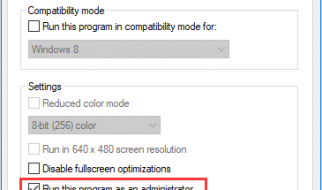You can thank the United States Navy seals for that adage. However, Napoleon had his own form of a similar phrase.
Dress me slowly, I am in a hurry.
 ?I left the rabbit in the dust? Photo by Cedric Fox on Unsplash
?I left the rabbit in the dust? Photo by Cedric Fox on Unsplash
What do you think each one of these means? What is your interpretation?
Is it that the military always wants to go slow? Maybe. However, moving too slowly can be as deadly as moving too fast.
When you go slow you have the opportunity to scan, study and observe. You can recognize patterns, routes, landmarks, the overall landscape ? literally and figuratively. When you go slow, things are much smoother. This is the same for military actions as well as business projects.
It allows you to generate a tentative initial plan. Although it is appropriate for the moment, you will have to change it later. But it gives you an opportunity to put the preliminary plan into action. When you plan, activities are less rough. There is less thrashing around. Smooth. When things are smooth, you can go faster. Have you ever been on smooth water?
 ?I will not rush because my movements are strategic? Photo by JESHOOTS.COM on Unsplash
?I will not rush because my movements are strategic? Photo by JESHOOTS.COM on Unsplash
By moving slowly and smoothly into battle (project), without rushing, with a proper amount of urgency, that preliminary plan, the tactical plan, can begin to mature into a strategic plan. Those smaller tactical wins can build to a strategic victory, however, if you do not move with urgency ? not frantic, not chaos ? with purpose, you will not survive. You have to approach the problem with the right speed.
Your brain has an amazing ability to catalog, map and reference the world around it. Rushing through causes gaps in that memory map. When you have gaps, you are unable to remember the last steps or plan for the next. You can only ride that surge for so long before it becomes an ebb, and you lose energy, you lose momentum.
By going slowly, with purpose, your brain and body have a better opportunity to learn and understand what is happening around it and to it. You are able to sustain that energy. You are able to be relentless. To complete tasks successfully. It is the daily twenty-mile march. Slow, deliberate. Plan, do, check, act. Observe, orient, decide, act.
Consider a task you need to accomplish. It is a complex task, but you want to get through it quickly. So you rush. You try to force the completion. You try to slam through and get the work done as quickly as possible. What happens to the quality of your work when you do that? It suffers and you fail.
If you are learning a new language or learning a new task, do you try to do it as quickly as you can? Or should you try to take your time, to understand it and to discover the nuances so that you become good and accomplish that particular task?
 ?smooth water is nice? Photo by Gabin Le Roy on Unsplash
?smooth water is nice? Photo by Gabin Le Roy on Unsplash
When you are in the water and you go slow, are you moving the water much? Are you causing waves from thrashing about? When you go slow and smooth you are not fighting currents. You have the time to set your feet, understand your next steps, plan your next moves. You are not burning excess energy that you would if you were moving too rapidly.
Remember Newton?s Third Law ??equal and opposite reaction.? The faster you try to go, the more pushback, the greater the resistance you have to face. Going slow and smooth allows you to get to where you need to go as rapidly as nature will allow you.
Consider a new project within your workplace. There are opportunities to try to get the work done quickly. But in order to get the complete scope of work that you need to complete, with high-quality, decreases the faster you go.
Moving too quickly will not allow you to engineer the solution properly. You will not be able to put together the right plans. The resources you need to support you cannot be in place in time, and eventually, the risk-mitigation plan you thought you had goes up in smoke because you moved too quickly.
You do not want to move too quickly because you do not need to duplicate your efforts. You do not have the time to do it right the first time, why would you have time to do it a second time? Take the time to plan appropriately. You need to go slower. You need to make it smooth.
That means you have to properly plan. You have to properly resource. You have to have realistic expectations as to what you will accomplish within the time frame allotted.
 ?I have my eye on your progress? Photo by Omar Lopez on Unsplash
?I have my eye on your progress? Photo by Omar Lopez on Unsplash
Think of it like a newborn child. Every project is a newborn. Learn to crawl first. Then walk. When ready, you can begin to run.
The crawling stage allows you to understand the rules of the game. The fundamental laws that must be followed to successfully complete the project. You are going slow to stay on track. Taking the time to properly plan and map your path allows you to pick the best, most efficient path.
If you move too quickly, you bump and bounce and veer from that path because you are frantic, trying to do too many things at once. Frustration and apathy sets in. Teams become demotivated and morale suffers. You lost time because you wanted to go too fast too soon.
You move to walking. You are more comfortable with yourself. Things are beginning to happen. You are gaining maturity and strength. You understand the landscape. You know what steps are needed, but do not have a full map to the horizon. The team gains confidence, you learn strengths and weaknesses and discover areas that you need to have additional resources. You are moving with purpose.
Now you begin running. You understand who is doing what by when. You tick off the milestones. You have that unconscious competence because you know your tasks, you know the actions, you know your team and you are working together smoothly. Urgently. With purpose. You begin to deliver outstanding performance. Extraordinary results.
Working harder does not make it go faster. If anything working harder makes it go slower. The duplication and extra effort you need to expend to correct missed decisions or poor choices that caused delays and required you to retrace your steps.
You cannot get more done in less time when you are trying to design, develop or understand complex or new solutions to a problem. Trying to force the issues only causes additional delays because your frustrations cause you to make greater mistakes and more noise.
When we slow down on a new product or project it allows us to ensure that we are taking the time to properly engineer a solution. To properly develop a process or procedure to successfully repeat the process in the future. Again, we need to recognize that going slow does not mean at a plodding pace. You still need to have a sense of urgency. You move too slowly, you lose the market. You are dead.
Urgency does not mean frantic. Urgency does not mean chaos. Urgency means having a bias for action. Urgency means that you need to take smart, purposeful action on a subject or a decision without delay. You are actively making a choice to move forward with a purpose with proper planning to allow for successful completion.
Slow is smooth and smooth is fast is dichotomous in itself. However, when you look at each of those holistically in the sense of wanting to slow down, to take your time and learn allows you to perfect your actions. That way you can get it right the first time without having to duplicate efforts.
It allows you more time to accomplish the next set of tasks without delay. In the effort of proper planning, it allows you to ensure that you are urgently and actively pursuing a positive outcome in their solution. That is an opportunity for success.
Slow is smooth and smooth is fast. Slow down, do it right the first time.
Go forth and be brilliant.


